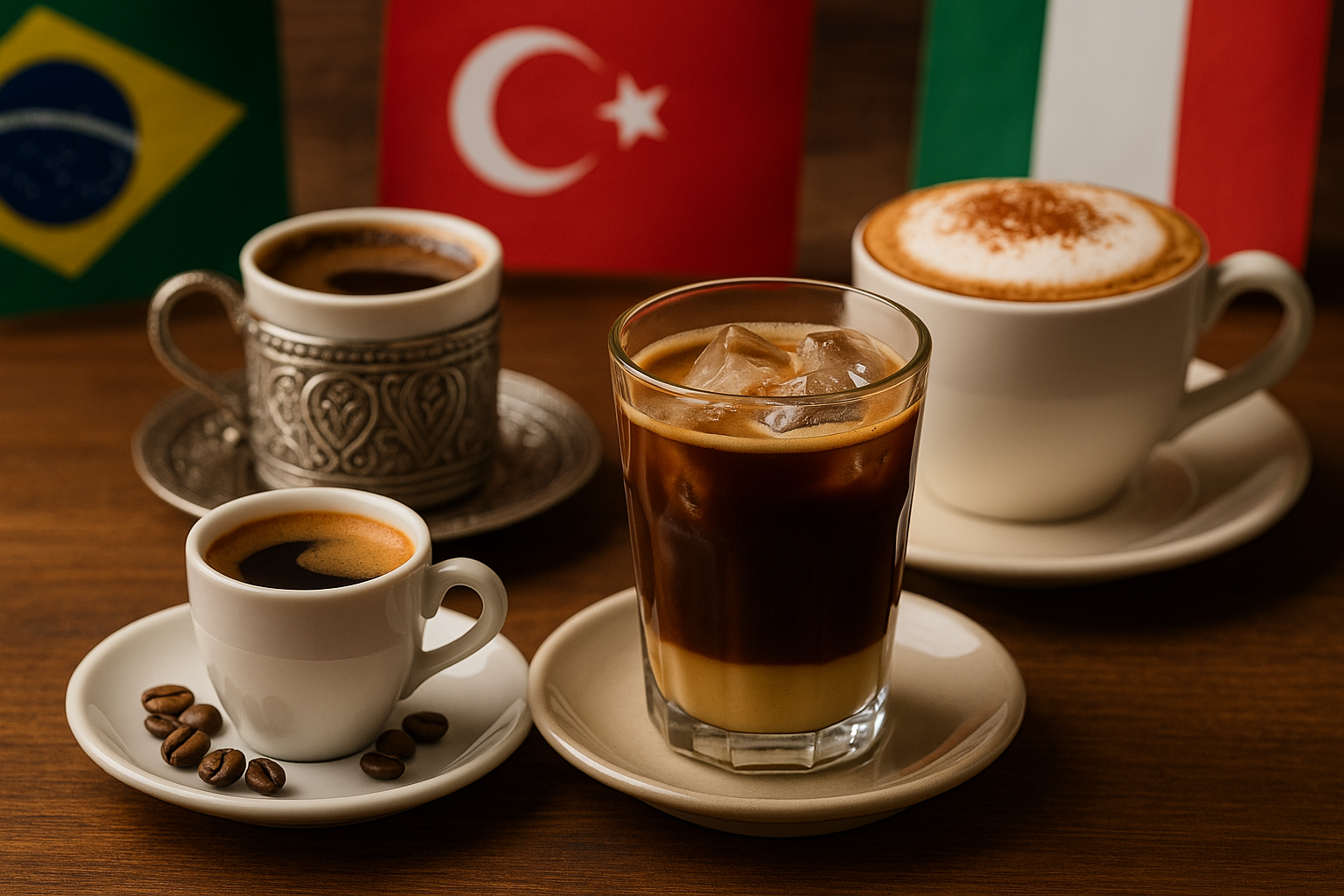Coffee is more than a drink—it’s a cultural icon, a daily ritual, and a social glue that connects people all over the world. The way each country prepares, serves, and enjoys coffee reflects its history, values, and lifestyle.
In this article, we’ll explore how coffee has evolved globally and the unique coffee cultures in various corners of the planet.
A Global Love Affair With Coffee
Coffee originated in Ethiopia, but it didn’t stay there for long. By the 15th century, it had reached the Middle East, where it became a staple in Sufi religious practices.
From there, coffee spread across Europe and eventually around the globe. Today, coffee is one of the most consumed beverages in the world, with different regions adopting it into their culture in distinct and fascinating ways.
Italy: The Home of Espresso Culture
In Italy, coffee is an art form. Espresso is king, and it’s usually enjoyed standing at the bar. Italians tend to drink their coffee quickly, as a strong shot, rather than sipping slowly. Cappuccinos are typically consumed only in the morning, never after a meal, as Italians believe milk disrupts digestion.
Coffee shops—“bar” in Italian—are social spaces where people briefly meet friends or have a quick break. It’s not about lingering, but about the ritual. This efficiency doesn’t take away from the flavor; in fact, Italian espresso is renowned for its bold, rich taste and perfect crema.
Turkey: Coffee With Ceremony and Fortune
Turkish coffee is deeply embedded in the country’s culture and tradition. It’s brewed using very finely ground coffee beans, boiled in a small pot called a cezve, and served unfiltered in small cups.
What makes Turkish coffee unique isn’t just the taste—though it’s thick and strong—but the ritual. It’s often served with a glass of water and a sweet treat like Turkish delight. After drinking, people turn their cups upside down to read fortunes from the coffee grounds—a practice known as tasseography.
In Turkey, coffee also has historical importance. It was the centerpiece of social gatherings in the Ottoman Empire, and the first coffeehouses in Istanbul were intellectual hubs where poets, scholars, and politicians would gather.
Ethiopia: The Birthplace of Coffee
Ethiopia holds a special place in coffee history—it’s where coffee was first discovered. According to legend, a goat herder named Kaldi noticed his goats becoming energetic after eating coffee berries. The rest is history.
Ethiopian coffee ceremonies are a cornerstone of social life. Preparing coffee is a long, thoughtful process that can take hours. The beans are roasted in front of guests, ground by hand, and brewed in a traditional clay pot called a jebena. The coffee is served in three rounds—abol, tona, and baraka—each with spiritual and social significance.
Japan: Perfection in Every Cup
Japan may not be the first country you think of when it comes to coffee, but it has developed a unique and highly refined coffee culture. Kissaten (traditional coffee houses) have existed since the early 20th century, and today, Japan leads in the art of pour-over brewing.
Japanese baristas are known for their precision and craftsmanship. Every detail matters—from the water temperature to the shape of the coffee dripper. The slow, deliberate process reflects the Japanese philosophy of kodawari, or the pursuit of perfection.
Convenience is also key in Japan—vending machines offering canned coffee are on nearly every street corner, showing how coffee is deeply woven into daily life in both artisanal and modern forms.
Sweden and Finland: Coffee as a Social Institution
Scandinavian countries, especially Sweden and Finland, have some of the highest coffee consumption rates in the world. In Sweden, there’s a cherished tradition called fika, which means to take a break for coffee and a pastry—often a cinnamon bun. But fika is more than a snack break; it’s a moment to slow down and connect with others.
Finland’s approach is similar. Coffee is so central to Finnish life that it’s served at almost every social gathering, from meetings to funerals. The coffee itself is often a light roast, and it’s not unusual for Finns to drink up to 8 cups a day.
Brazil: Coffee as a National Identity
Brazil is the largest coffee producer in the world, and the beverage plays a big role in its culture. Cafézinho, a small, strong, and sweet coffee, is a symbol of hospitality. It’s offered to guests at home, in offices, and even in shops.
Unlike espresso-focused countries, Brazilians typically use paper filters to brew their coffee. While the global specialty coffee movement is growing, traditional methods still dominate in everyday life. Coffee farms also shape the country’s rural economy and are often passed down through generations.
Vietnam: Sweet and Strong Traditions
Vietnamese coffee is distinctive in both preparation and flavor. Made using a phin (a small drip filter), Vietnamese coffee is typically brewed directly into a glass containing sweetened condensed milk.
The result is a strong, syrupy coffee known as cà phê sữa đá when served iced, or cà phê sữa nóng when served hot. Vietnam is also famous for unique variations like egg coffee (cà phê trứng), which includes a creamy egg yolk foam topping, creating a rich, dessert-like experience.
United States: The Rise of Coffee Customization
The U.S. has developed one of the most diverse coffee cultures in the world. From mass-produced drip coffee to third wave artisanal espresso bars, Americans have embraced a customizable coffee experience.
The rise of coffee chains like Starbucks made specialty drinks like lattes and frappuccinos household names. At the same time, independent roasters and cafés have driven a movement toward ethical sourcing, small-batch roasting, and experimental brewing methods.
Coffee here is more than a drink—it’s an expression of personal identity. From reusable mugs to mobile ordering, coffee in the U.S. blends convenience with creativity.
A Universal Connection With Local Flavor
Despite differences in how coffee is made or consumed, one truth remains: coffee is a universal language. It connects people across continents, generations, and cultures. Whether it’s a strong shot of espresso at an Italian café, a ceremonial brew in an Ethiopian village, or a chilled sweet drink on a Vietnamese street, coffee is a shared experience that reflects the diversity of human life.
Understanding how each culture interacts with coffee not only broadens our perspective, but also deepens our appreciation for this humble bean that has changed the world.
Why Coffee Culture Matters
In a time when people are more connected digitally but feel increasingly isolated, the cultural rituals surrounding coffee offer something deeply human: connection. Whether you’re enjoying a quiet cup at home or sharing a pot with friends, coffee invites us to pause, reflect, and engage.
Coffee is more than caffeine—it’s conversation, tradition, and identity.

Marcelo Oliveira is a coffee enthusiast and content creator specializing in barista skills, brewing methods, equipment reviews, coffee-related health insights, and fascinating curiosities from the coffee world. With a deep passion for every step of the brewing process, he turns technical knowledge into accessible and engaging content for both beginners and seasoned coffee lovers. Marcelo’s goal is to help readers appreciate the full experience of coffee—from bean to cup.
